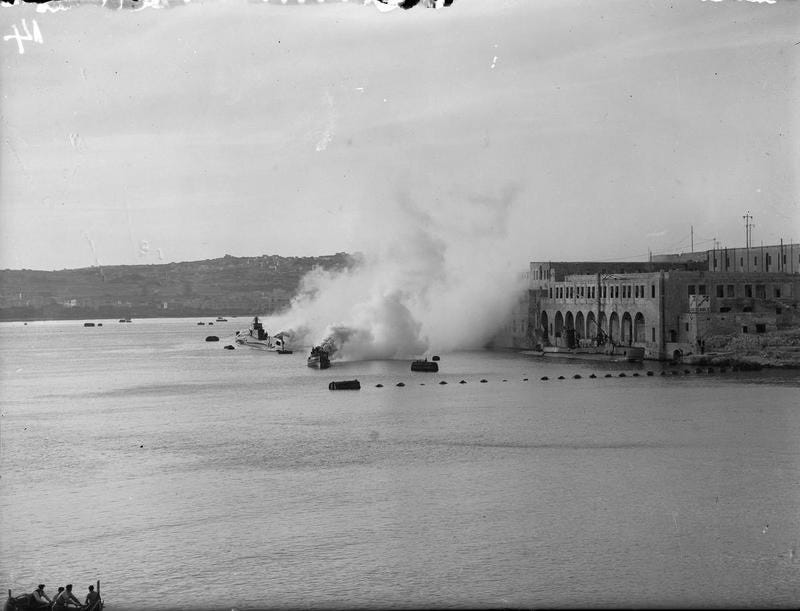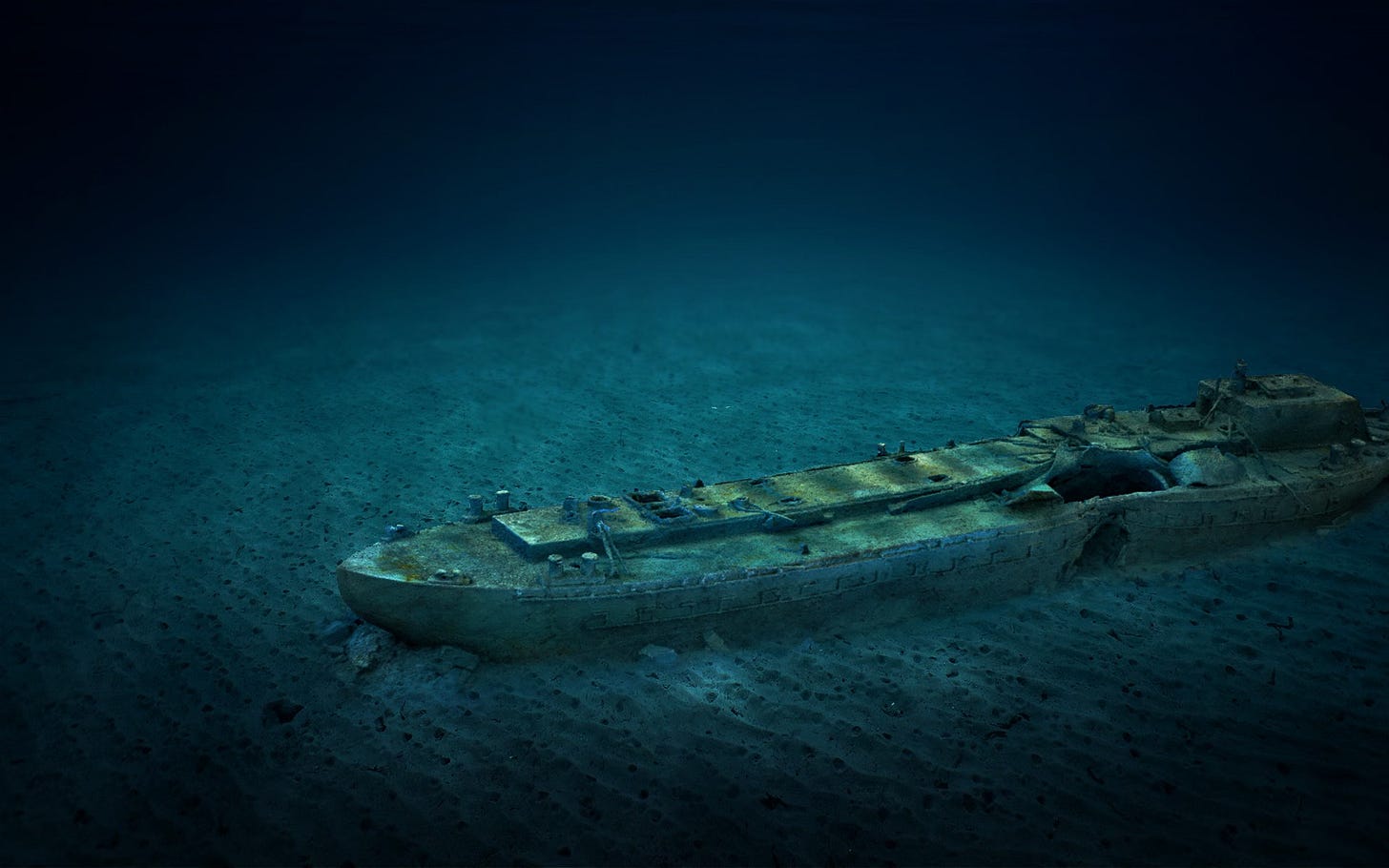First Wreck
From Malta, With Love
Alerts sounded all through the night of 5 March 1942. The next morning, the 10th Submarine Flotilla moored at Marsamxett Harbour braced for renewed air attacks from the German Luftwaffe. Located just South of Fort Manoel, the strategic harbor is overlooked by the Lazzaretto. The British Admiralty requisitioned the 17th-century hospital and quarantine facility following the outbreak of war in ‘39 — it was quickly turned into a submarine base and the 10th stationed in the harbor. Bombs in the preceding days took out the electricity and telephone lines. And on that fateful morning, three bombs fell alongside the submarine P39. Two missed. Bracing, the submarine’s crew was startled by the deafening sound of one striking metal — the shale oil lighter tied alongside it, X-127, was bursting into flame.
The little lighter had a long journey to Malta. X-127 was one of 200 X-lighters ordered by the British Admiralty in 1915 as part of the Dardanelles campaign. X-127 was designated as a water transport. Designed and built in England, it participated in the ill-fated Gallipoli landings. It was then one of the X-Lighters eventually moved back to Malta. The rest of the X-Lighters were sold off or repurposed into troop transports.
It is 1 April 2022, just over 80 years after the sinking. I had arrived on the island a few days prior, now shortly into my week-long stay. The winter chill in Bath, England, where I had been studying over the preceding months, had begun to wear on me and I had come in search of warmth during my mid-semester break. On a whim, I checked the cost of a flight to Malta. After seeing how little I could rent a room for the whole week, I booked the trip. All expenses came out to less than $500.
Standing at the end of the pier looking out into Marsamxett Harbour, Lisa, my dive guide, related X-127’s last day in her Glasgow lilt. I turn to ready my borrowed equipment. A student next to me is doing his open-water check-out dives. A paratrooper in the German military, he had spent part of his childhood in Malta. The second diver is a Londoner-turned-Mancunian. He is fascinated with the American Civil War and talks about a visit to Gettysburg as we drove from the dive shop to the harbor.
We were late arriving. Our original objective had been the HMS Maori, a British Destroyer sunk in an air raid in February of 1942. Current and wind were high on that side of the harbor, and the guides decided to head to the relative shelter of Lazaretto Wharf. As we enter the water, I slip on my rented Apeks RK3s, rotate the bezel on my Seiko, and begin to fin after Lisa. I was not yet used to the steel 12L tank on my back, having only used an aluminum 80 prior, but my trim was even and the new fins comfortable.
The wreck began to take shape in front of us within seconds, the surface in easy reach. The bow lies just five meters underneath its shimmering light. X-127 sank where it was moored. The topography slopes downward, resembling a hillside as the stern leads to 22m. We start towards the stern, trying to keep our dive profile clean. Just past amidships, the port side became marred by a massive depression. Two gaping holes, jagged and unnatural, disturbed the otherwise intact Lighter. It was the impact site. It was a stark reminder of X-127’s violent end, and I had never seen anything like it. I hovered in a place for a moment, transfixed at the sight.
The lakes of my previous experience had boats in them, sure, but those were small sailboats and powerboats intentionally scuttled as playthings for divers. In a single moment, staring at the maw opened within the X-127’s hull, I knew I was never going to be the same. Wrecks had suddenly and completely worked their way into my being and there was nothing I could do.
The chill that had been slowly gnawing at me was becoming more apparent. Lisa caught my attention, and we began swimming up the center of the wreck. We do so slowly, savoring the sights and the few fish now calling the Lighter home. She shines her torch inside an opening and we peer inside, little more than darkness and silt visible. We swam on. Gently frog-kicking, we returned to the bow. I turned to take one last look at X-127 before setting off toward the harbor. We quickly packed up the gear after surfacing. Lisa's drysuit had leaked, and my wetsuit and hooded vest combination had not been enough to keep warm. The ride back was uneventful by comparison and the next few days passed in a whirl. I was back in England less than a week later. As I resumed my courses, my mind was in the sea — back in the shadow of a centuries-old hospital, 17m under the surface on the wreck of the X-127.




